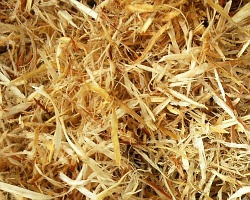How can I reuse or recycle bonfire ashes?
 It’s Guy Fawkes Night in the UK today and so all over the country people will be eating toffee apples, warming their hands on the glow of a bonfire and making things go BOOM.
It’s Guy Fawkes Night in the UK today and so all over the country people will be eating toffee apples, warming their hands on the glow of a bonfire and making things go BOOM.
I’m not a great fan of Bonfire Night – I don’t like apples, I have a (what I consider to be healthy) fear of fire and we’ve had fireworks going off on our estate for the last month (mostly in daylight… I … don’t understand) so the novelty has somewhat worn off – but most people seem to dig it so come tomorrow morning there will be lots of left over ashes in gardens up and down the land.
So what can you do with them?
If you’re reasonably sure the wood (etc) burned in the fire was untreated/unpainted then the ashes can be composted – but too many will turn the heap too alkaline. It can also be used as a fertiliser – but with the same precaution.
Any other ideas?
(Photo by ma_makki)
























if you’re that into it… you could wet them and let them drip to get lye for soap making… old school…
I did something similar-ish – wrap the ash in cloth, filter water through it (using a funnel) and you get water that is perfect for washing clothes in. I did this outside in a big plastic bowl one hot summer day when I was bored (hey, it’s productive!) and the clothes came out clean and smelling like very clean clothes. :)
You can always make them into ink.
Just crush really fine. Wet. Dehydrate. Repeat. The goal is to saturate the amount of ash into the water. It is a bit like Sumi ink, but not nearly as black. I did a few paintings that I used old ash ink in. It is kind of fun!
Also makes a good texture in art projects, etc.
it keeps slugs and snails away from lettuce, just sprinkle it around every couple weeks-ish.
We use to put the cold ash (white) – Not the charcoal (black) that can be burned again – down the latrine at camp to combat the smell of the outhouse.
Hey, You can use the bonfire ashes be manure for plant.
Use it to enrich soil or compost where alkaline is required, or as a barrier to slugs and snails.
It’s good for absorbing smells in general – we used to add it to a compost toilet, until someone put on ashes that were still hot, they ignited the whole thing and we had to build another toilet…
Given that the ash is alkaline, it could quite easily help where soild is too acidic or plants prefer alkaline soil conditions. However, too much potash is not a bad thing and at this time of year, would not have adverse effects on plants or the compost heap as both are predominantly dormant post september/ october when temperatures drop. However, recycle them with used tealeaves, used coffee granules, used orange peel, used lemons etc and the acid in these will neutralise the alkalinity of the potash.
Just when you thought ash was only rubbish. . . I guess it’s true when they say one mans rubbish is another mans treasure. . Some good ideas. .
Gardeners questiontime on radio4 were talking about this yesteday, good for the garden asmentioned above
After it snows, we just sprinkle it on the steps outside instead of using salt. It gets your shoes a little dirty but I’ve never slipped on the ice when we’ve used it
I am using wood ash, mostly laurel but including other trees on my soft fruit to help them produce healthy crops of currants and gooseberries, but the other use for the ash is as a major ingredient in stoneware glazes. It can make oriental style glazes when added to with a little powdered clay. This I did way back when studying ceramics and spent a whole week slaking it to get the alkalinity down from the very highest level to the neutral value that was necessary. The shame of it was the abundant source of the ash was the burning of the elms from Clifton Downs as a very long avenue of these sadly missed trees had succumbed to Dutch Elm Disease. The glaze was a very fluid transparent olive green and was a source of a lot of enthusiasm from our tutors.
I am from a generataion we did not waste anything so if it were me and you had scrubbed the skins good before baking I would slice them thin and make a cheese sauce like i use for scalloped potatoes and pour over them and reheat for another meal.
Growing up in the 50’s in the Midwest, I experienced some pretty harsh winters and always a lot of snow. We would take our fireplace ash bucket and pour ashes on the driveway for added traction.